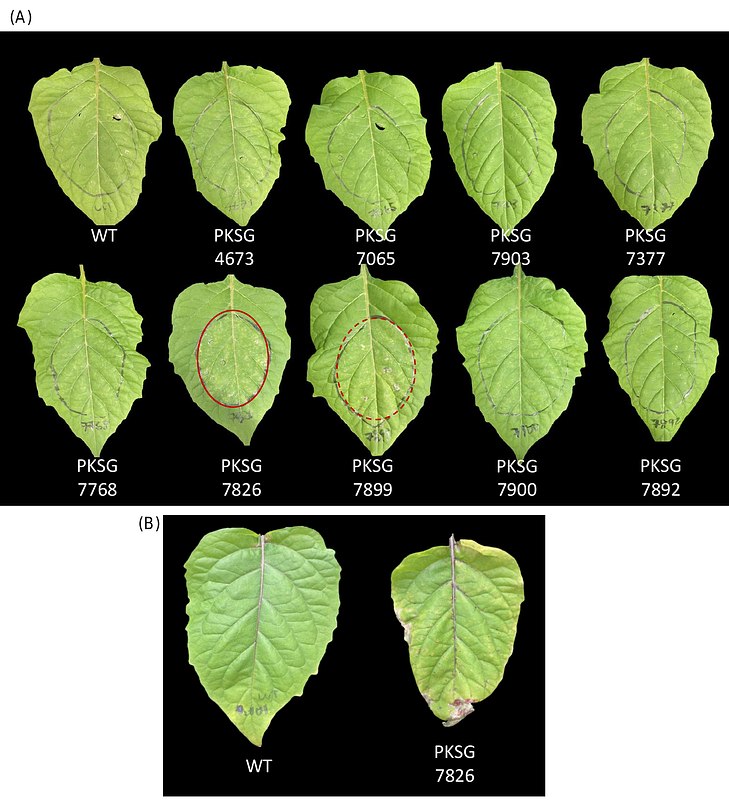Multiple effectors trigger nonhost resistance in Solanum americanum against Pseudomonas syringae

Multiple effectors trigger nonhost resistance in Solanum americanum against Pseudomonas syringae
Kim, J.; Vlkova-Zlebkova, M.; McCann, H.; Sohn, K. H.
AbstractWild plant species are threatened by diverse pathogens, but disease symptoms are rarely observed in nature. This suggests that wild plants harbor valuable sources of resistance. In this study, we show that a model bacterial pathogen Pseudomonas syringae pv. tomato (Pto) DC3000 triggered defense responses in all tested accessions of a wild Solanaceae species, Solanum americanum. Pto DC3000-triggered immunity in S. americanum required type III secretion system. We show that seven Pto DC3000 effectors (AvrPto, HopAD1, HopAM1, HopC1, HopAA1-1, HopM1, and AvrE1) triggered hypersensitive responses (HR) in S. americanum accession SP2273. Significantly, sequential deletion of the HR-triggering effectors from Pto DC3000 resulted in enhanced virulence in S. americanum. However, the well-conserved effectors, HopM1 and AvrE1 were indispensable for virulence. We conclude that the immunity triggered by multiple effectors contributes to nonhost resistance in S. americanum against P. syringae. We propose that the identification of the corresponding disease resistance genes for HopM1 and AvrE1 in S. americanum would accelerate development of durable immunity to P. syringae pathogens in Solanaceae crops.